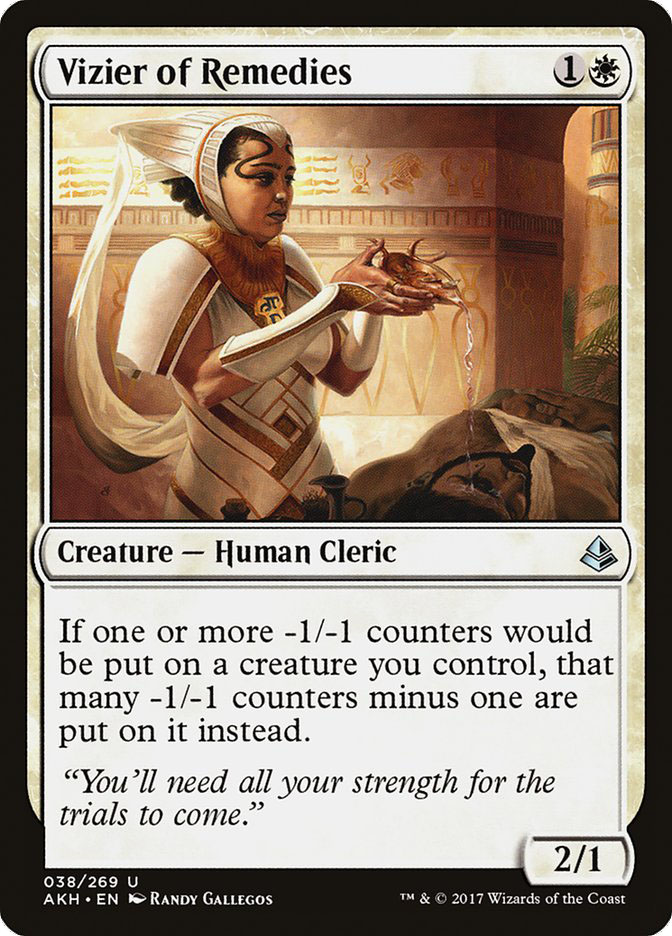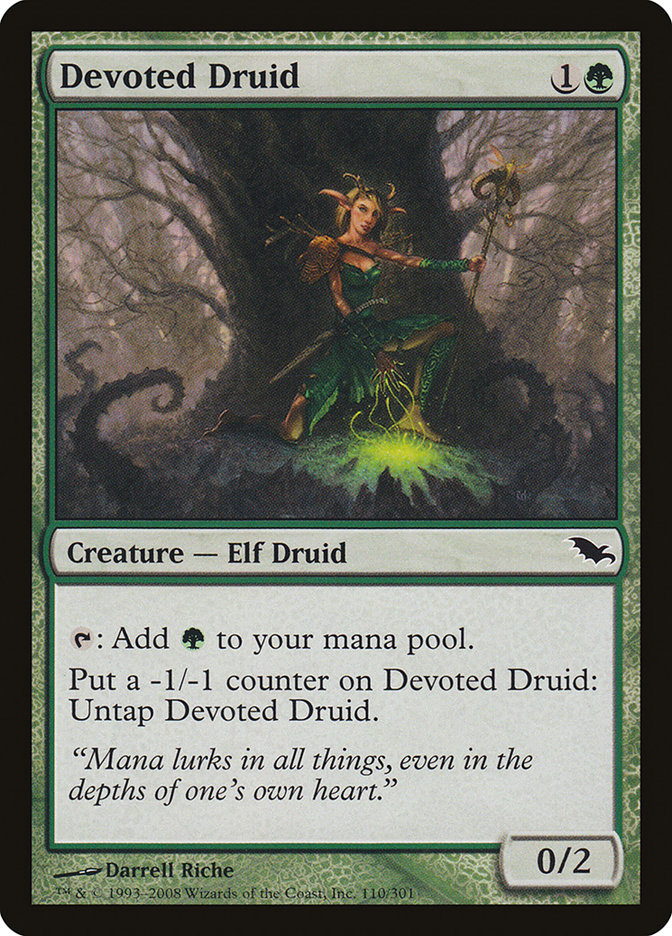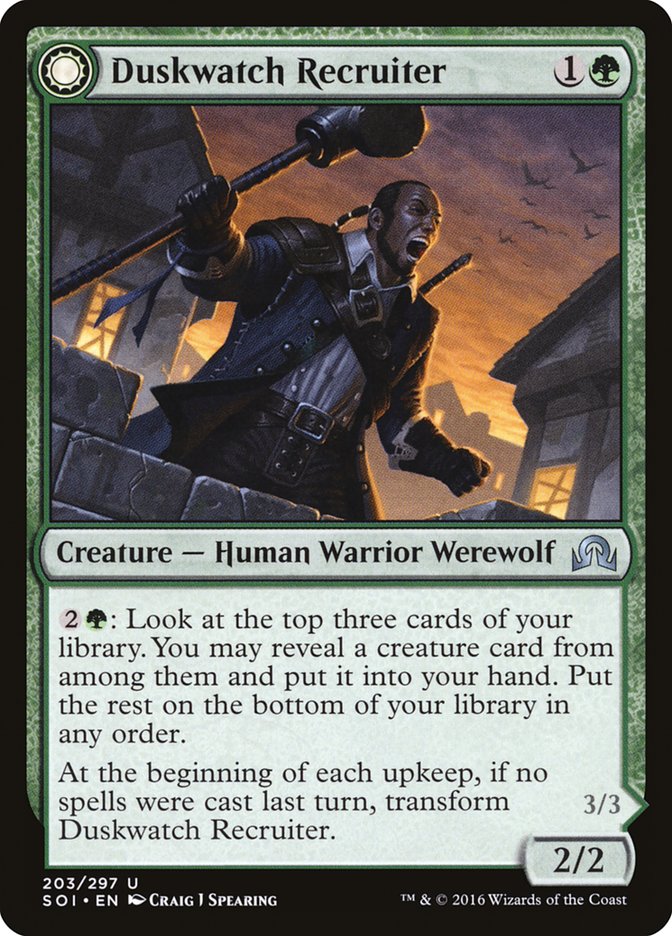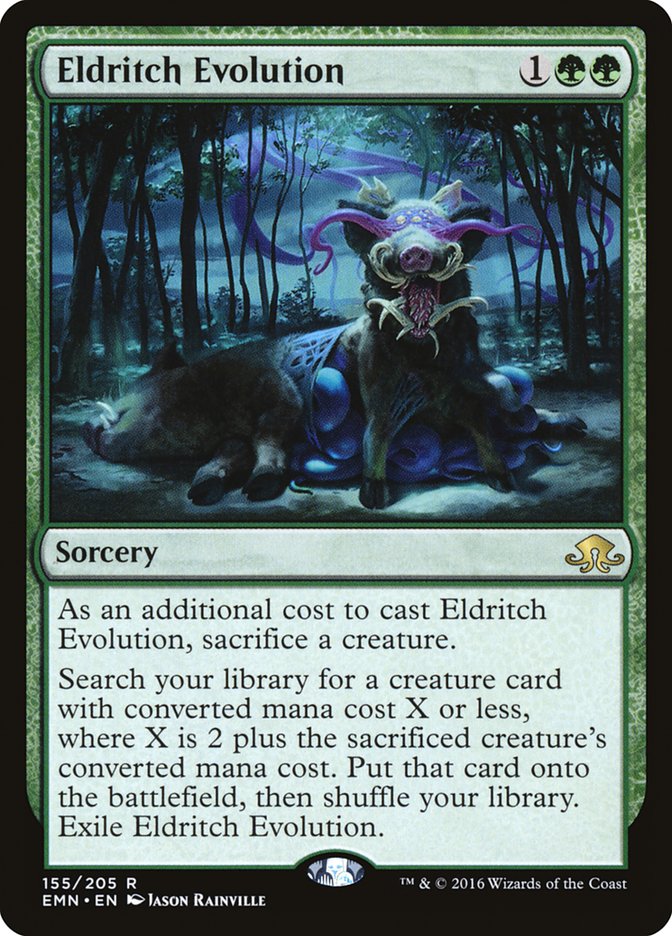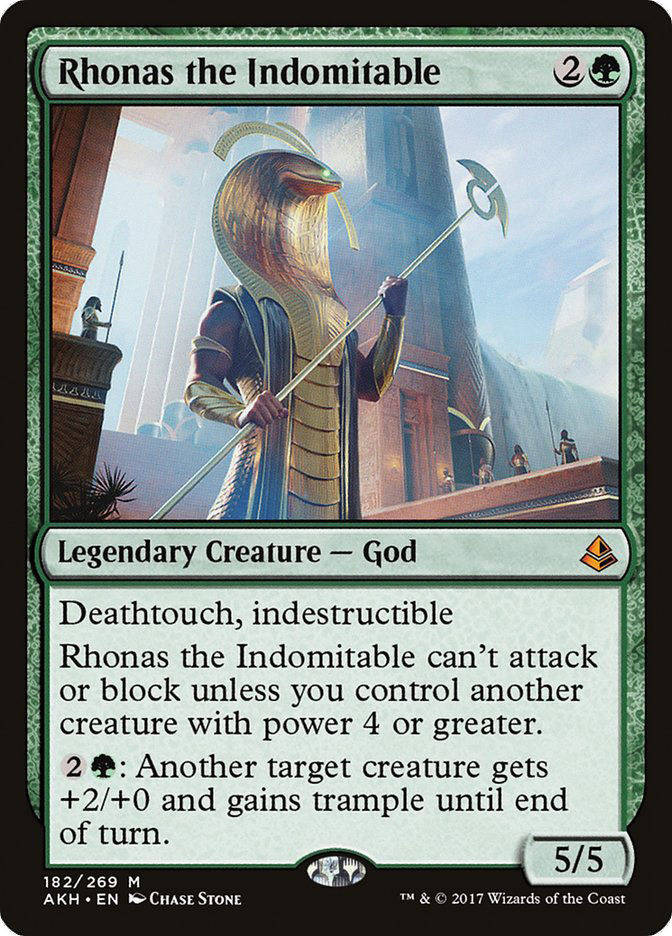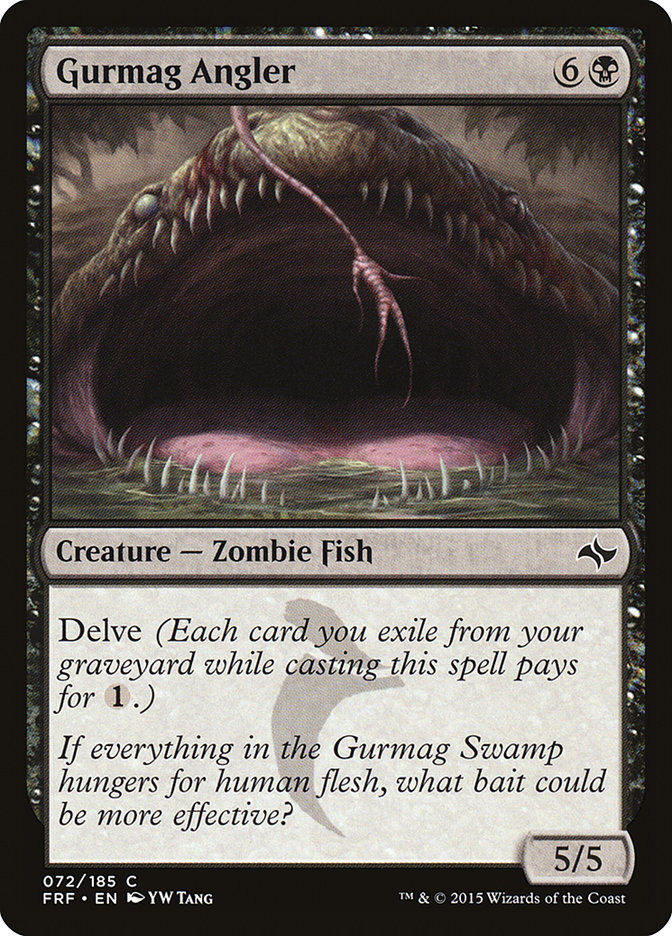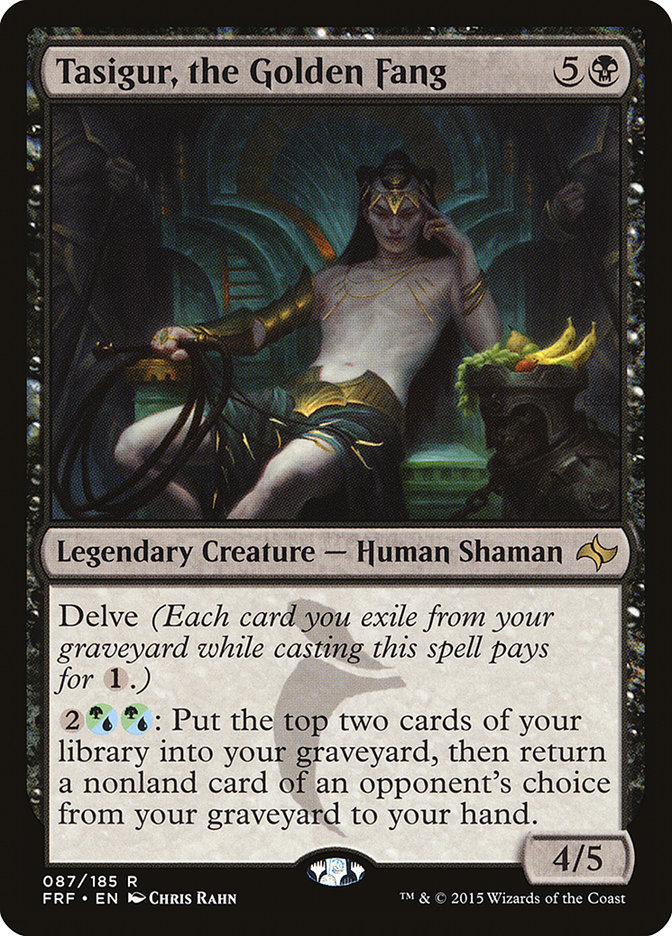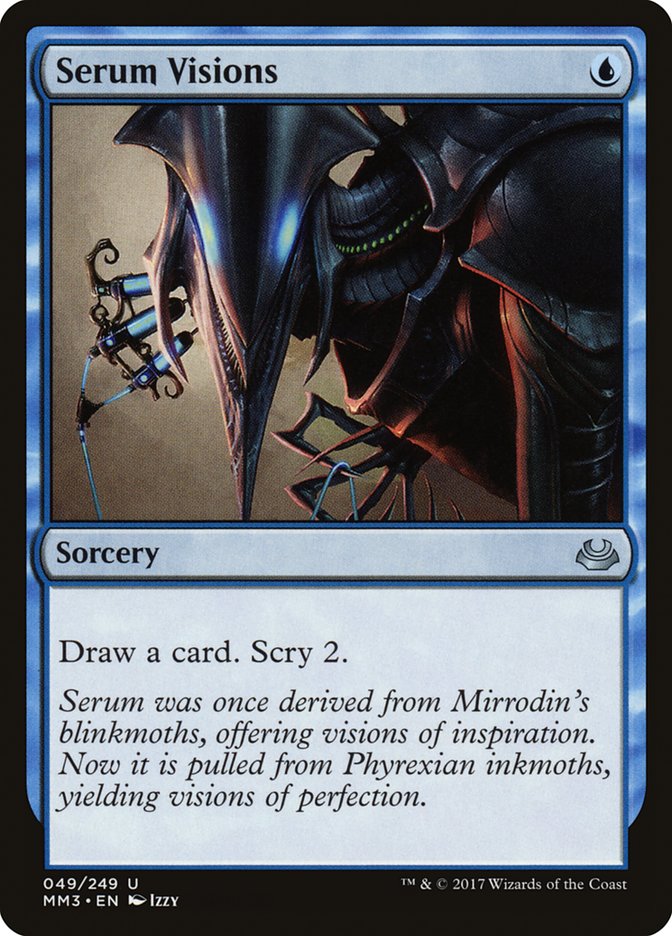After a Pro Tour I always feel a little out of the loop when it comes to Modern, since I spend at least a solid month playing and thinking about limited and Standard, but it’s always fun to check out what I’ve missed in the early developments with the new set.
This weekend in Louisville, “Counters Company”, the update on Abzan Company that incorporates Vizier of Remedies, had its breakout performance, taking first, third, and fourth in the Modern Classic along with a second place showing on the winning team in the main event. That’s a top-tier performance in a format as open and diverse as Modern, and one that shouldn’t be overlooked.
Creatures (30)
- 4 Birds of Paradise
- 4 Eternal Witness
- 4 Devoted Druid
- 4 Kitchen Finks
- 2 Noble Hierarch
- 2 Viscera Seer
- 1 Fiend Hunter
- 1 Anafenza, Kin-Tree Spirit
- 2 Duskwatch Recruiter
- 2 Walking Ballista
- 4 Vizier of Remedies
Lands (22)
Spells (8)

Creatures (30)
- 4 Birds of Paradise
- 4 Eternal Witness
- 4 Devoted Druid
- 4 Kitchen Finks
- 2 Noble Hierarch
- 3 Viscera Seer
- 1 Scavenging Ooze
- 1 Anafenza, Kin-Tree Spirit
- 2 Duskwatch Recruiter
- 1 Walking Ballista
- 4 Vizier of Remedies
Lands (22)
Spells (8)

First of all, I suspect we’ll drop the name “Counters Company” in a week or two, as this will be the default Abzan Company deck and the distinction will be recognized as entirely irrelevant. Second, while the update is irrelevant as a classification, it’s highly relevant as a strategic change to how the deck functions and the deck’s power level, so let’s give it a closer look.
For those of you who may not have been following Modern lately, let’s start with what’s different and why it matters. The basic idea behind this “new deck” is that Vizier of Remedies functions like Melira, Sylvok Outcast with Kitchen Finks, but unlike Melira, Vizier of Remedies also works with Devoted Druid, allowing you to untap Devoted Druid as often as you like, generating arbitrarily large amounts of mana.
By replacing Wall of Roots as the two-cost mana creature in the deck with Devoted Druid and replacing Melira, Sylvok Outcast, the deck gains access to a two-card arbitrarily large mana combo. While that might not seem like that big of a deal (I don’t know why combining two cards to have arbitrarily large mana on turn 3 wouldn’t seem like a big deal to you), it’s significant that it also makes it far easier for this deck to win without using the graveyard, which severely restricts opposing disruptive options.
The big design question this opens up is, “How do you use the mana to win from there?” Having arbitrarily large mana is great, but when we assemble our combo, we’d like to win the game on the spot if possible. The simplest answer in terms of the amount of deck space you have to devote to it is to play one or more Duskwatch Recruiters. Then you can cast and activate that as many times as you want, and if you don’t have one, you can use Chord of Calling and/or Collected Company to find it first.
From there, some people include Walking Ballista to actually kill the opponent on the spot, but I’m not convinced it’s worth the space, since it’s a miss on Collected Company and you can’t usefully Chord for it. I’d like to believe you can find a way to win once you can put every creature in your deck in your hand and cast as many as you want as long as they cost green mana. You might not get to actually kill your opponent on turn 3 that way, but they’ll probably die on your fourth turn after not being able to kill you through your blockers and lifegain.
If it’s later in the game, you can do things like use Eternal Witness to get back Collected Company, use Viscera Seer to set up the Collected Company you need to get Anafenza, Kin-Tree Spirit onto the battlefield (assuming white mana is a limiting factor), and then use Kitchen Finks / Viscera Seer / Anafenza to arbitrarily largely bolster your team and attack.
So basically, what we know is that one of the previous best Modern decks got a big upgrade from Amonkhet that allowed it to put up an extremely strong showing this weekend. Given that the archetype has been around for a long time, lists had previously gotten fairly well-refined, but this new package allows and demands some substantial retooling, so I think it’s worth looking at a few takes and discussing the best options.
The core of the deck that’s widely agreed upon at this point seems to be:
Creatures (22)
Spells (8)

Sometimes people trim a Kitchen Finks, or occasionally they skip Kitchen Finks entirely, and sometimes they play more of some of these cards, but these seem to be where there’s greatest consensus. As mentioned, I’m not totally sold on Walking Ballista, but I do think it’s a good card, so it could easily be worth it.
Some people use Eldritch Evolution to help get the combo together, but I’d rather just play more good creatures and play a value game until I can assemble a combo. I like rounding out the deck with creatures and not skimping on land (while most people play 22-23, some players on Magic Online have gone as low as nineteen, as Andy Roop did in the Classic at Louisville (with four Simian Spirit Guide).
I think I like including the Viscera Seer / Kitchen Finks package, since it’s a very easy way to win without untapping with Devoted Druid. I think it makes sense to play either Anafenza, Kin-Tree Spirit or Walking Ballista, but probably not both, and I don’t like including Spike Feeder / Archangel of Thune, since I think that package mostly existed to win without the graveyard, which the deck can do more easily now. Some people play Rhonas the Indomitable, but I think that’s worse than the other mana sink/finisher options.
I personally would recommend:
Creatures (29)
- 4 Birds of Paradise
- 3 Eternal Witness
- 4 Devoted Druid
- 4 Kitchen Finks
- 2 Noble Hierarch
- 2 Viscera Seer
- 1 Scavenging Ooze
- 1 Fiend Hunter
- 3 Duskwatch Recruiter
- 1 Walking Ballista
- 4 Vizier of Remedies
Lands (23)
Spells (8)

It’s possible that skipping Renegade Rallier is a big mistake, and I do wonder if there’s something to Magic Online user Madsutzon’s straight G/W approach:
Creatures (33)
- 1 Birds of Paradise
- 4 Eternal Witness
- 4 Devoted Druid
- 4 Noble Hierarch
- 4 Avacyn's Pilgrim
- 4 Duskwatch Recruiter
- 3 Selfless Spirit
- 4 Renegade Rallier
- 1 Rhonas the Indomitable
- 4 Vizier of Remedies
Lands (19)
Spells (8)

While I don’t love Rhonas the Indomitable, I respect that this list is playing it over Walking Ballista, which could be right, since it’s a Collected Company hit.
I’d be tempted to cut it or the fourth Duskwatch Recruiter for a twentieth land, probably Gavony Township. I like this deck’s use of Selfless Spirit and Renegade Rallier to commit to assembling and protecting the Devoted Druid combo, so I’m not sure if that’s better or worse than splashing black to have that and the Kitchen Finks / Viscera Seer combo.
Modern isn’t a “one size fits all” kind of format, in that, being extremely diverse, it really rewards playing a deck you’re broadly familiar and very comfortable with. For many of you, that means that you already know exactly what deck you’re playing in your next Modern tournament, whenever that might be.
But for those who are still undecided, you may be looking to pick something up, but not interested in casting Collected Company. That’s fine; there are plenty of other great options. Before I get to my old standby of casting Thoughtseize, another deck that currently has my attention is Eldrazi Tron for one very simple reason: Magic Online user Nasilemak has been racking up trophies with it without touching their list.
Given how many trophies they’ve earned, I’m sure Nasilemak’s very familiar with the archetype and its matchups, so I don’t know that others can expect to perfectly replicate their success, but I’d also be inclined to trust their exact card choices unless you have a very compelling reason to deviate, like it you know you want access to a specific plan that you can easily incorporate for a matchup you expect to play out in a certain way.
Given that, if this deck were my speed, I’d start with Nasilemak’s exact list:
Creatures (19)
Planeswalkers (2)
Lands (24)
Spells (15)

Ever since Eldrazi burst into Modern with a dominant Pro Tour showing before the banning of Eye of Ugin, it’s been a respectable presence in Modern ever since because the creatures are just versatile enough threats to pose a real problem for people. This deck includes a backup plan of assembling Tron and casting Karn Liberated or large Walking Ballistas. This is essentially a midrange deck that’s capable of both explosive aggressive starts and dominating late-game plays. The deck is inconsistent in exactly how it threatens its opponent, yet consistent at doing something, since it’s all colorless spells, so the inconsistency mostly makes it hard to play against or know just what to prepare for in any given game.
Historically, a lack of sideboard options has been a serious concern for colorless decks, and sideboard cards are often strong motivations to play various colors (especially white), but Modern has gotten to the point where an impressively robust sideboard is available using only spells that don’t require colored mana.
There are a lot of viable heuristics for choosing a deck. In Modern, people adapt, but they do so fairly slowly, and the developments at last week’s Classic could fly somewhat under the radar, so getting in on the new tech that was successful in a physical tournament is a viable approach. The next option is looking at what the most successful people on Magic Online are doing, which brought me to Eldrazi Tron.
A third option is to ask friends what they like. When you do that, you should expect that the answer you’ll get will probably be an objectively lower-powered or worse-positioned deck, but you’ll presumably have the advantage of being able to discuss the deck with someone who knows it well, which can be extremely important in Modern. In my case, that would probably result in playing some kind of Bant Company deck with Tireless Tracker. While you could do worse, I’m guessing Counters Company is a better option.
The last option is to play what you know yourself, or an updated version of it.
For me, that would mean playing Death’s Shadow, and that’s where I’ll start, but I’ll be starting with Grixis Death’s Shadow, which I haven’t played yet. Gurmag Angler and Tasigur are smaller than Tarmogoyf in the mirror, but their immunity to Fatal Push often gives them the advantage. More importantly, Stubborn Denial basically fixes the problem that Jund Death’s Shadow sometimes just plays out as a midrange deck and combo or big mana decks can race or go over you.
Serum Visions may not be as powerful as Traverse the Ulvenwald, but it’s nice that it doesn’t require any setup, and Grixis Death’s Shadow is probably a little bit better against graveyard hate than Jund Death’s Shadow; specifically, it’s a little better against Rest in Peace and a lot better against Nihil Spellbomb, which had emerged as the best way to combat the Jund Death’s Shadow mirror, so sidestepping that offers a pretty large advantage.
For reference, and for those who are interested, this is where I’d start with Grixis Death’s Shadow:
Creatures (16)
Lands (19)
Spells (25)

This is very similar to what most people have been playing on Magic Online, except that I’m very concerned about playing too much creature removal in Modern, so I’m playing three Stubborn Denial in the maindeck instead of only two, and I’m only playing three Fatal Push. No groundbreaking technology, just a really strong deck.
My next Modern tournament will be at #GPVegas, so I still have some time to test, but it’s extremely likely that I’ll either be playing Death’s Shadow or Collected Company, and I think both are excellent choices for almost anyone. Collected Company has enough toolbox elements that there are a few tricks of the trade to know, but if anything, the Devoted Druid builds look a lot more straightforward than past versions, and once you get the hang of managing your life total, Death’s Shadow is just classic Magic at this point.


